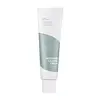What's inside
What's inside
 Key Ingredients
Key Ingredients

No key ingredients
 Benefits
Benefits

 Concerns
Concerns

No concerns
 Ingredients Side-by-side
Ingredients Side-by-side

Water
Skin ConditioningButylene Glycol
HumectantGlycerin
HumectantXylitol
HumectantDiisostearyl Malate
EmollientDimethicone
EmollientArachidyl Alcohol
EmollientBehenyl Alcohol
EmollientPentylene Glycol
Skin ConditioningBeeswax
Emulsion StabilisingHydroxyethyl Acrylate/Sodium Acryloyldimethyl Taurate Copolymer
Emulsion StabilisingGlyceryl Stearate
EmollientArachidyl Glucoside
EmulsifyingPhenoxyethanol
PreservativeSqualane
EmollientTrimethylsiloxysilicate
EmollientCyclopentasiloxane
EmollientGlyceryl Caprylate
EmollientPolysorbate 60
EmulsifyingStearyl Glycyrrhetinate
Skin ConditioningXanthan Gum
EmulsifyingDimethiconol
EmollientCarnosine
Skin ConditioningPhytosteryl/Octyldodecyl Lauroyl Glutamate
Skin ConditioningHistidine
HumectantTaurine
BufferingLysine Hcl
Skin ConditioningPolyquaternium-61
Skin ConditioningGlutamic Acid
HumectantGlycine
BufferingLeucine
Skin ConditioningHistidine Hcl
Skin ConditioningSerine
MaskingValine
MaskingSodium Aspartate
BufferingThreonine
Alanine
MaskingIsoleucine
Skin ConditioningAllantoin
Skin Conditioning1,2-Hexanediol
Skin ConditioningPhenylalanine
MaskingHydrogenated Lecithin
EmulsifyingArginine
MaskingProline
Skin ConditioningPolyglyceryl-10 Laurate
Skin ConditioningTyrosine
MaskingDisodium Inosinate
EmollientDisodium Guanylate
EmollientWater, Butylene Glycol, Glycerin, Xylitol, Diisostearyl Malate, Dimethicone, Arachidyl Alcohol, Behenyl Alcohol, Pentylene Glycol, Beeswax, Hydroxyethyl Acrylate/Sodium Acryloyldimethyl Taurate Copolymer, Glyceryl Stearate, Arachidyl Glucoside, Phenoxyethanol, Squalane, Trimethylsiloxysilicate, Cyclopentasiloxane, Glyceryl Caprylate, Polysorbate 60, Stearyl Glycyrrhetinate, Xanthan Gum, Dimethiconol, Carnosine, Phytosteryl/Octyldodecyl Lauroyl Glutamate, Histidine, Taurine, Lysine Hcl, Polyquaternium-61, Glutamic Acid, Glycine, Leucine, Histidine Hcl, Serine, Valine, Sodium Aspartate, Threonine, Alanine, Isoleucine, Allantoin, 1,2-Hexanediol, Phenylalanine, Hydrogenated Lecithin, Arginine, Proline, Polyglyceryl-10 Laurate, Tyrosine, Disodium Inosinate, Disodium Guanylate
Water
Skin ConditioningArtemisia Princeps Extract
Skin ConditioningGlycerin
HumectantEthylhexyl Isononanoate
EmollientDipropylene Glycol
HumectantGlycyrrhiza Glabra Root Extract
BleachingPanthenol
Skin ConditioningArachidyl Alcohol
EmollientBehenyl Alcohol
EmollientArachidyl Glucoside
EmulsifyingGlucose
HumectantCetearyl Olivate
Sorbitan Olivate
EmulsifyingDipotassium Glycyrrhizate
HumectantAllantoin
Skin ConditioningTheobroma Cacao Seed Extract
AntioxidantCarbomer
Emulsion StabilisingXanthan Gum
EmulsifyingAmmonium Acryloyldimethyltaurate/Vp Copolymer
Disodium EDTA
Caprylyl Methicone
Skin ConditioningEthylhexylglycerin
Skin ConditioningTromethamine
BufferingGlycereth-26
HumectantBeta-Glucan
Skin Conditioning1,2-Hexanediol
Skin ConditioningCeramide AP
Skin ConditioningButylene Glycol
HumectantCaprylic/Capric Triglyceride
MaskingWater, Artemisia Princeps Extract, Glycerin, Ethylhexyl Isononanoate, Dipropylene Glycol, Glycyrrhiza Glabra Root Extract, Panthenol, Arachidyl Alcohol, Behenyl Alcohol, Arachidyl Glucoside, Glucose, Cetearyl Olivate, Sorbitan Olivate, Dipotassium Glycyrrhizate, Allantoin, Theobroma Cacao Seed Extract, Carbomer, Xanthan Gum, Ammonium Acryloyldimethyltaurate/Vp Copolymer, Disodium EDTA, Caprylyl Methicone, Ethylhexylglycerin, Tromethamine, Glycereth-26, Beta-Glucan, 1,2-Hexanediol, Ceramide AP, Butylene Glycol, Caprylic/Capric Triglyceride
 Reviews
Reviews

Ingredients Explained
These ingredients are found in both products.
Ingredients higher up in an ingredient list are typically present in a larger amount.
1,2-Hexanediol is a synthetic liquid and another multi-functional powerhouse.
It is a:
- Humectant, drawing moisture into the skin
- Emollient, helping to soften skin
- Solvent, dispersing and stabilizing formulas
- Preservative booster, enhancing the antimicrobial activity of other preservatives
Allantoin is a soothing ingredient known for its protective and moisturizingg properties. Because of this, it is often added to products with strong active ingredients.
Studies show higher concentrations of this ingredient can promote wound healing.
Though it can be derived from the comfrey plant, allantoin is produced synthetically for cosmetic products to ensure purity.
Learn more about AllantoinArachidyl Alcohol is a fatty alcohol made from peanut oil. It is an emollient, emulsifier, and thickener.
You'll most likely find this ingredient as an emulsifier in water-based cosmetics.
We don't have a description for Arachidyl Glucoside yet.
Behenyl Alcohol is a type of fatty alcohol (these are different from the drying, solvent alcohols).
Fatty Alcohols have hydrating properties and are most often used as an emollient or to thicken a product. They are usually derived from natural fats and oils; behenyl alcohol is derived from the fats of vegetable oils.
Emollients help keep your skin soft and hydrated by creating a film that traps moisture in.
In 2000, Behenyl Alcohol was approved by the US as medicine to reduce the duration of cold sores.
Learn more about Behenyl AlcoholButylene Glycol (or BG) is used within cosmetic products for a few different reasons:
Overall, Butylene Glycol is a safe and well-rounded ingredient that works well with other ingredients.
Though this ingredient works well with most skin types, some people with sensitive skin may experience a reaction such as allergic rashes, closed comedones, or itchiness.
Learn more about Butylene GlycolGlycerin is already naturally found in your skin. It helps moisturize and protect your skin.
A study from 2016 found glycerin to be more effective as a humectant than AHAs and hyaluronic acid.
As a humectant, it helps the skin stay hydrated by pulling moisture to your skin. The low molecular weight of glycerin allows it to pull moisture into the deeper layers of your skin.
Hydrated skin improves your skin barrier; Your skin barrier helps protect against irritants and bacteria.
Glycerin has also been found to have antimicrobial and antiviral properties. Due to these properties, glycerin is often used in wound and burn treatments.
In cosmetics, glycerin is usually derived from plants such as soybean or palm. However, it can also be sourced from animals, such as tallow or animal fat.
This ingredient is organic, colorless, odorless, and non-toxic.
Glycerin is the name for this ingredient in American English. British English uses Glycerol/Glycerine.
Learn more about GlycerinWater. It's the most common cosmetic ingredient of all. You'll usually see it at the top of ingredient lists, meaning that it makes up the largest part of the product.
So why is it so popular? Water most often acts as a solvent - this means that it helps dissolve other ingredients into the formulation.
You'll also recognize water as that liquid we all need to stay alive. If you see this, drink a glass of water. Stay hydrated!
Learn more about WaterXanthan gum is used as a stabilizer and thickener within cosmetic products. It helps give products a sticky, thick feeling - preventing them from being too runny.
On the technical side of things, xanthan gum is a polysaccharide - a combination consisting of multiple sugar molecules bonded together.
Xanthan gum is a pretty common and great ingredient. It is a natural, non-toxic, non-irritating ingredient that is also commonly used in food products.
Learn more about Xanthan Gum